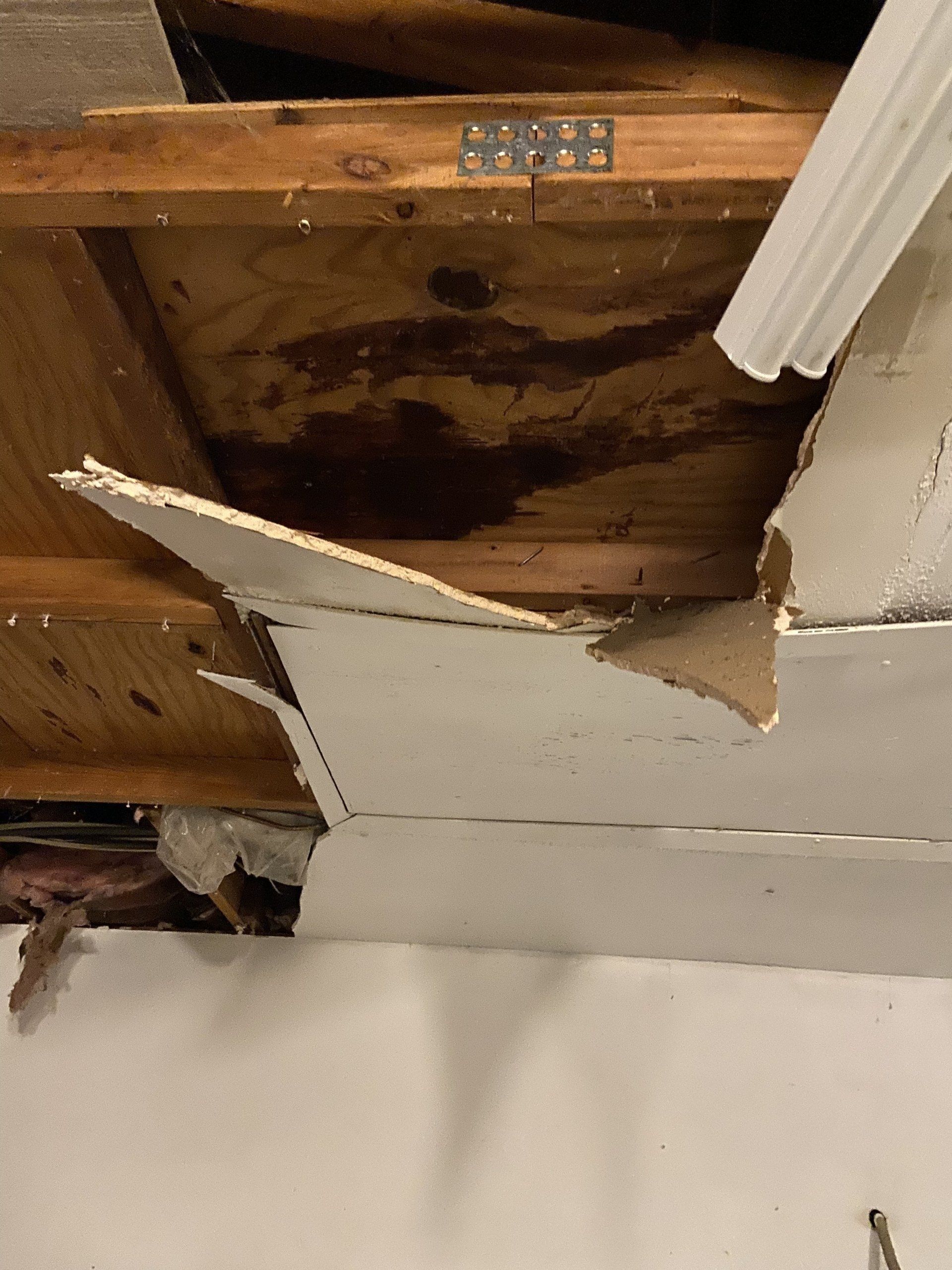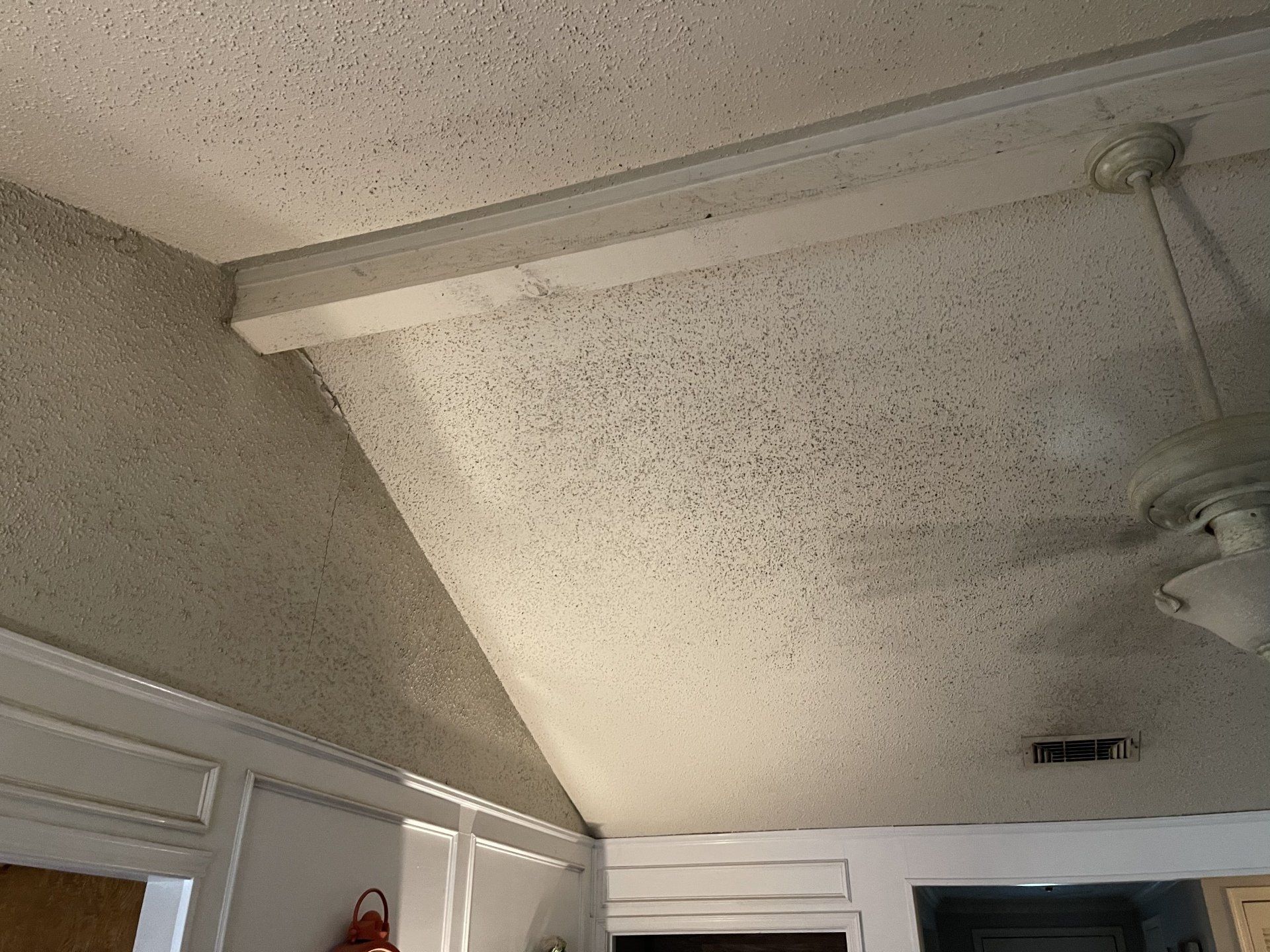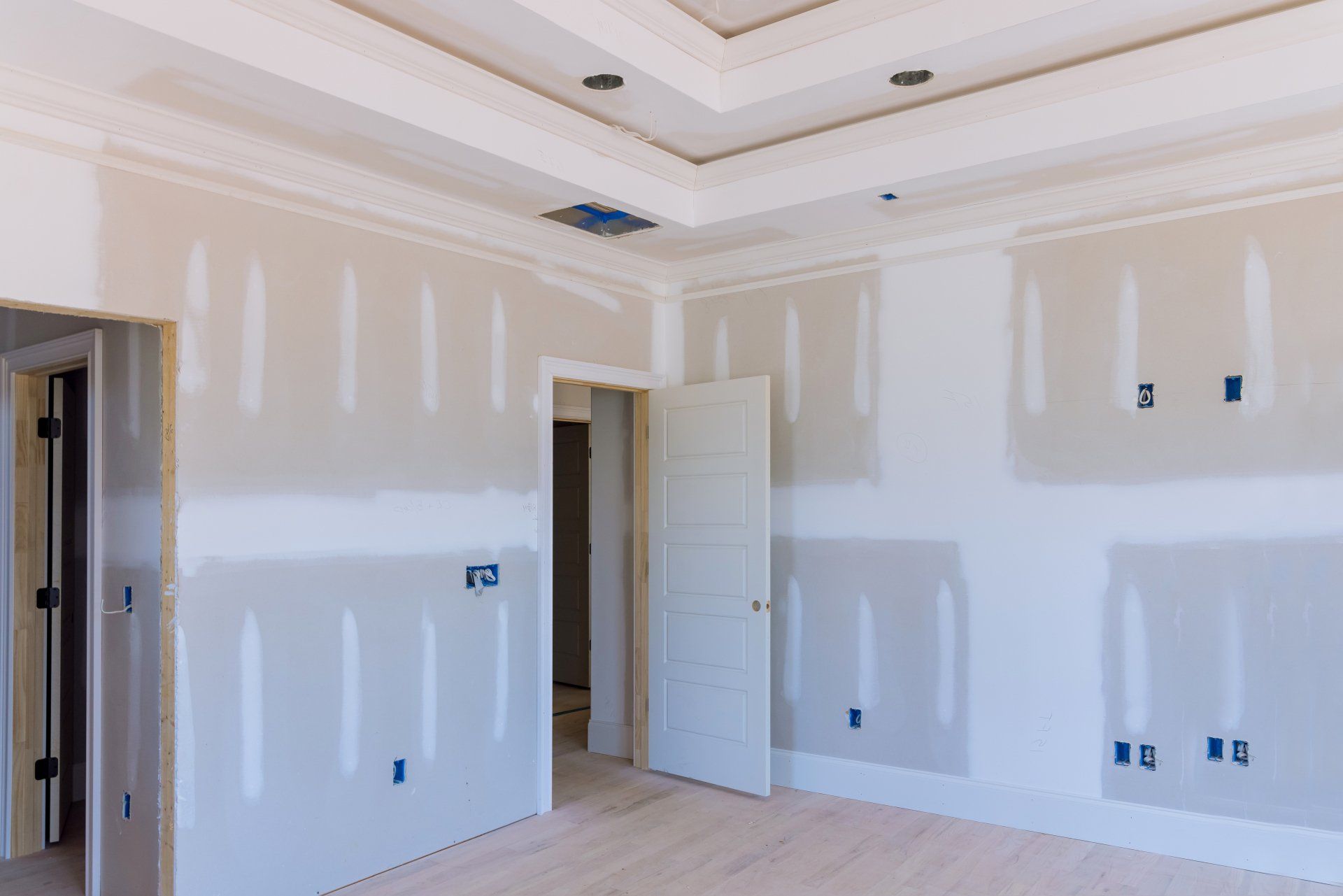Understanding and Addressing Water Damage Ceiling: Costs, Repairs, and Solutions
"Factors to Consider When Calculating the Cost of Ceiling Repairs"
Water damage to the ceiling is a common and often underestimated problem that can occur in homes and commercial buildings. Whether it's a leaky roof, burst pipe, or plumbing issue, water damage can wreak havoc on your property. In this comprehensive article, we will explore the various aspects of water damage ceiling, including how to fix it, repair costs, and who to call for assistance. We'll also delve into the average cost to repair a water damaged ceiling and discuss effective methods for patching up the damage. By the end, you'll have a clear understanding of how to tackle this issue and restore your ceiling to its former glory. Here we will cover every question in your mind such as drywall water damage repair cost, water leak ceiling repair cost, cost to fix ceiling water damage and much more.
When faced with water damage to a ceiling, homeowners need to address a variety of factors to effectively manage the costs, repairs, and solutions involved. This article aims to provide an in-depth understanding of how to tackle these issues, ensuring that both immediate and long-term needs are met.

Identifying Water Damage Ceiling
The first step in addressing a water damaged ceiling is recognizing the signs. Water stains, peeling paint, sagging or discolored areas, and visible mold growth are all indicators of water damage. These issues may seem minor at first, but if left untreated, they can lead to more extensive and increased leaking ceiling repair cost.
It's crucial to pinpoint the source of the water intrusion, whether it's a leaking roof, damaged plumbing, or faulty gutters. Once you've identified the source, you can take steps to address it and prevent further damage.
Common causes include plumbing issues, floods, and high humidity levels that can affect various areas of a home, from the basement to the bathroom and kitchen. Plumbing leaks may occur from aged or damaged pipes, often hidden above the ceiling or within walls, slowly causing damage to the drywall and joists. It's crucial to involve a plumber to accurately diagnose and resolve these issues to prevent further damage.
Assessing the Extent of the Damage
Once the source of water damage is identified, assessing the extent of the damage is next. This involves examining the ceiling, walls, beams, and foundation for any signs of moisture, mold, or structural weakness. Special attention should be paid to materials like lath and plaster or drywall. If the home is older, it might also contain asbestos within the popcorn ceiling texture, which can pose significant health risks if disturbed. In such cases, a professional equipped to handle asbestos should be consulted.
Repair Process and Solutions
The repair process typically begins with removing the damaged section of the ceiling. This may involve cutting out sections of drywall or carefully dismantling parts of a lath and plaster ceiling. Once the damaged material is removed, the joists and beams must be dried and treated for any signs of mold or pests such as termites, which thrive in damp wooden structures.
After ensuring the structural integrity of the ceiling, repairs can commence. This might involve replacing the drywall or reapplying new plaster mixed with joint compound. For a smooth finish, spackling paste or mud is used, followed by sanding with sandpaper. If the ceiling was originally a popcorn texture, it may require reapplication of the texture or opting for a more modern smooth finish.
In situations where the damage is extensive, involving electrical fixtures or causing foundational issues, the services of a general contractor and an electrician might be necessary. These professionals can ensure that all aspects of the repair comply with local building codes and safety standards.
Water Damage Ceiling Repair
When faced with a water damaged ceiling, many homeowners wonder, "Where can I find local water damage ceiling repair?" Locating a reputable and local repair service is essential to ensure prompt and efficient repairs. Here are some steps to help you find the right professionals:
a. Online Search:
Begin your search by using online resources like Google or Yelp to look for water damage repair companies in your area. Reading reviews and checking their ratings can help you narrow down your options.
b. Ask for Recommendations: Reach out to friends, family, or neighbors who may have dealt with similar issues. Their recommendations can be valuable in finding trustworthy
professionals.
c. Verify Credentials:
Before hiring any contractor, make sure they are licensed, insured, and experienced in dealing with water damage ceiling repairs.
d. Request Quotes:
Contact multiple repair companies to get estimates for the cost of fixing your water damaged ceiling. This will give you an idea of the average cost in your area.
Costs Associated with Water Damage Repairs
Repairing a water-damaged ceiling involves several costs, which can vary widely depending on the extent of the damage and the materials involved. The average price per square foot to repair or replace a damaged ceiling can range significantly, often influenced by factors like zip code, accessibility, and the type of damage. For instance, replacing a section of water-damaged drywall might cost less than repairing a historic plaster ceiling reinforced with lath.
If mold has developed due to moisture, additional remediation may be necessary, adding to the overall expense. Mold and mildew not only affect the structure but also the health of residents, making it essential to address them promptly.
Water Damage Ceiling Cost
The cost of repairing a water damaged ceiling can vary significantly based on several factors, including the extent of the damage, the materials used, and the location. On average, leaky ceiling repair cost can set homeowners back from $300 to $1,500 for minor repairs, while more extensive damage can cost several thousand dollars.
Here are some factors that influence the cost:
a. Extent of Damage:
The more extensive the water damage, the higher the repair cost. If the damage has affected the structural integrity of the ceiling, additional reinforcement may be required, further increasing the cost.
b. Materials:
The type of materials used for repairs, such as drywall, plaster, or ceiling tiles, will impact the overall cost. High-quality materials tend to be more expensive but offer better durability.
c. Labor Costs: Labor costs can vary depending on your location and the complexity of the repair job. Areas with a higher cost of living may have higher labor rates.
d. Mold Remediation:
If mold has developed due to the water damage, it will need to be removed and treated separately, adding to the overall cost.
e. Additional Repairs:
Sometimes, water damage can lead to other issues like electrical or insulation damage. These additional repairs will also increase the total cost.
Average Cost to Repair Water Damaged Ceiling
To provide a more detailed insight into the cost to repair drywall ceiling water damage, let's look at some common scenarios and their associated average costs:
a. Minor Water Stains:
If the damage is limited to minor water stains and peeling paint, repairs may cost between $300 and $600. This typically involves repainting the affected area and addressing the source of the leak.
b. Ceiling Tile Replacement:
If your ceiling uses tiles, the average cost to replace water-damaged tiles and address any underlying issues is approximately $500 to $1,000.
c. Drywall Repairs:
For moderate damage that requires drywall patching and painting, expect to pay around $800 to $1,500. This includes fixing the damaged drywall, repainting, and addressing the source of the water intrusion. Drywall roof repair cost can vary depending on the extent of damage especially water damaged drywall repair cost can be much more than your expectations
d. Extensive Damage: In cases of severe water damage that has compromised the structural integrity of the ceiling, repairs can range from $1,500 to $4,000 or more. This may involve extensive drywall replacement, insulation, and reinforcement.
It's essential to obtain multiple quotes from reputable contractors to get a precise estimate for your specific situation. Keep in mind that delaying repairs can lead to more extensive damage and higher costs in the long run.
Involvement of Home Insurance
Homeowners should consult their home insurance policy to determine coverage for water damage, which can significantly offset repair costs. Insurance might cover various aspects of the repair, including the cost of hiring a handyman, pest control services, and waterproofing measures to prevent future incidents.
Preventative Measures and Home Improvement
Preventative measures are crucial in avoiding future water damage. This includes regular inspection and maintenance of plumbing, proper landscaping to prevent lawn runoff into the foundation, and ensuring that the home’s humidity levels are controlled. Waterproofing the basement and using caulk to seal gaps in bathrooms and kitchens are also effective strategies.
Additionally, upgrading materials like replacing old lath and plaster with modern drywall or improving ventilation can help manage moisture and enhance the durability of the home structure.
Patching Water Damaged Ceiling
Patching a water damaged ceiling is a crucial step in the repair process, especially for minor to moderate damage. Here's a general outline of how to patch up a water damaged ceiling:
a. Safety Precautions:
Before starting any repairs, ensure that the area is safe to work in. Turn off power to the affected room to prevent electrical hazards.
b. Identify the Source:
As mentioned earlier, it's essential to identify and address the source of the water intrusion to prevent future damage.
c. Remove Damaged Material:
Carefully remove any damaged drywall, plaster, or ceiling tiles. Be cautious not to create further structural issues.
d. Dry Out the Area:
Allow the affected area to dry thoroughly to prevent mold growth. You can use fans or dehumidifiers to expedite the drying process.
e. Patch and Repair:
Depending on the extent of the damage, patching may involve applying new drywall, joint compound, and sanding to create a smooth surface. For ceiling tiles, simply replace the damaged tiles.
f. Prime and Paint:
After the patching is complete, prime and paint the repaired area to match the rest of the ceiling.
g. Address the Source:
Finally, make sure to address the source of the water damage to prevent future issues. This may involve fixing a leaking roof, repairing plumbing, or improving ventilation.
Cost of Fixing Water Damaged Ceiling
Wondering how much does it cost to repair ceiling water damage? Well, the water damage ceiling repair cost can vary widely depending on the specific repairs needed. As previously mentioned, minor repairs may cost as little as $300, while more extensive damage could run into several thousand dollars.
When it comes to water damage ceiling fix, prompt action and professional expertise are essential to restore your ceiling's integrity and prevent further deterioration.
Here are some additional factors that can affect the ceiling repair water damage cost:
a. Geographic Location:
Repair costs can vary by region due to differences in labor rates, material costs, and local regulations.
b. Materials Used:
Higher-quality materials may come with a higher price tag but offer greater durability and longevity.
c. Professional Services:
If you choose to hire professionals for the entire repair process, including mold remediation and electrical work, expect to pay more than if you tackle some aspects of the repair yourself. The water damaged ceiling repair cost might be more here but the end result will always be better
d. Insurance Coverage: Depending on your insurance policy, some or all of the repair costs may be covered. Be sure to check your policy and file a claim if applicable.
Conclusion
Water damage ceiling issues can be daunting, but with the right knowledge and professionals by your side, you can effectively address and repair the damage. The key is to act promptly, identify the source of the water intrusion, and obtain multiple quotes to determine the most cost-effective approach.
While the cost of fixing a
water damaged ceiling can vary, it's essential not to cut corners on repairs, as this can lead to more significant problems down the line. Investing in high-quality materials and skilled professionals will ensure that your ceiling is restored to its original condition, protecting the value and safety of your home or business. Remember that prevention is always the best strategy, so regular maintenance and inspections can help you avoid costly water damage in the first place.



